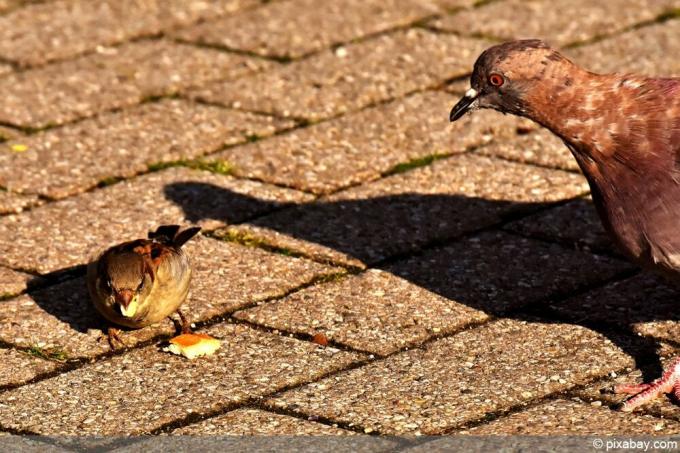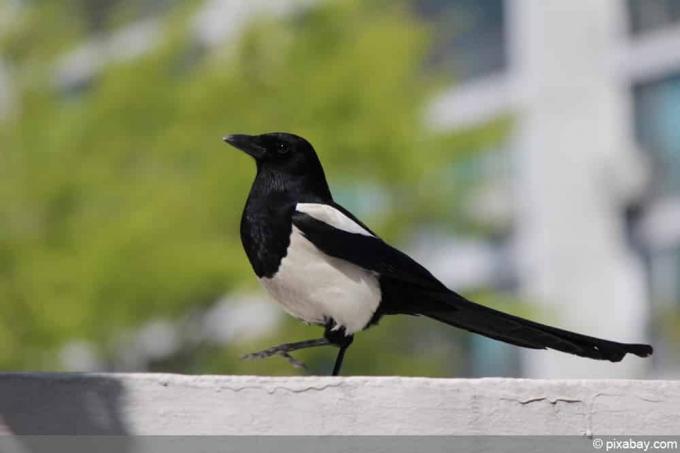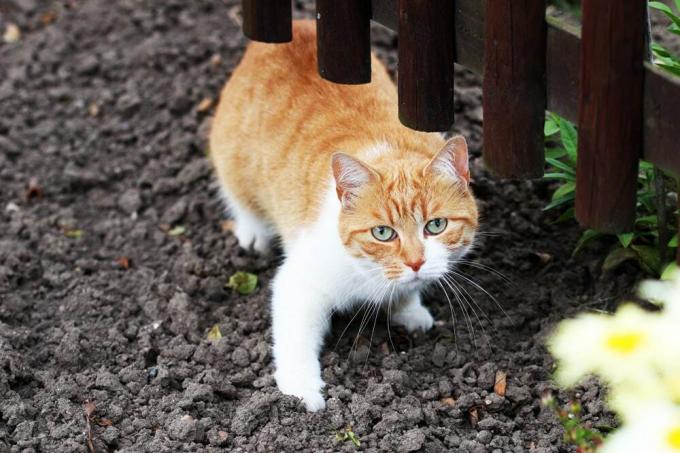

Table of contents
- diet of the badger
- identify badger droppings
- holes in the garden
- latrines
- texture and shape
- Included components
- scratch marks on trees
- fixed ways
- drive away badgers
- Is badger feces dangerous?
- Remove badger droppings
After raccoons, martens and foxes, badgers have also arrived in the cities. The shy wild animal is rarely observed. His legacies after a nightly tour of discovery through our gardens are annoying.
diet of the badger
Badgers are omnivores. They eat what they come across on their forays. Her favorite food is earthworms. They also eat insects, snails and small animals, as well as mushrooms, roots, berries and fruit. In our gardens you will find everything you need. By the way, when badgers encounter wasp nests, they almost completely clear them out. A single animal eats more than a hundred wasps. Wasps are not active at night, so the predator is not harmed.
identify badger droppings
Anyone who discovers animal droppings in the garden in the morning first thinks of raccoons or perhaps scolds the neighbor's cat. It could also be European badger droppings (Meles meles). We have put together the most important identifying features.
holes in the garden
One feature that indicates nocturnal visits to the garden are badger holes. The animals dig these when looking for food. They are only 5 to 10 centimeters very deep.
latrines
Badgers build latrines to deposit their droppings. They would never just drop the droppings on the meadow or on paths. The elongated, flat holes are often located under fruit trees and berry bushes. Latrines are considered to be the badger's identifying feature and help distinguish the droppings from those of the foxes. Raccoons and raccoon dogs, which are common in inhabited areas, also build latrines for defecating.
texture and shape
The color and consistency of badger droppings depend on the food ingested. The droppings are often sausage-shaped and dry or very soft. The badger droppings are similar to that of the fox. Due to the rough surface and the cylindrical shape, it can be easily distinguished. Fox droppings have a conspicuously pointed shape at the end.

Included components
Badger droppings contain visible components of the ingested food. Remains of insects or berries as well as cherry stones and animal hair can be easily recognized.
scratch marks on trees
Badgers sharpen their claws on trees. Noticeable scratch marks are a sign of badgers in the garden.
fixed ways
Generations of badger families always use the same routes to get from the burrow to their food sources. This creates fixed paths, so-called changes.
drive away badgers
Badger droppings are annoying. Much more problematic, however, are the underground passages that the animals dig in the garden. They can destroy lawns and affect tree growth. It is important to get rid of the uninvited visitor as quickly as possible.
- Close the garbage can well
- Do not throw kitchen waste in the compost
- cover compost
- Eliminate fallen fruit
- Close loopholes in the fence
- Do not place pet bowls in the garden
A notice:
Badgers are sensitive to noise. Commercially available badger repellents take advantage of this property. A simple wind chime on the patio can help scare away badgers from the garden.
There are numerous tips for repelling badgers with various odorants circulating on the Internet, but you will not have lasting success with pepper or human urine. Get advice from a specialist retailer.
Is badger feces dangerous?
Badger, fox and raccoon droppings often contain parasites, viruses and bacteria. Worms and diseases can be transmitted to both humans and pets through direct contact with feces.
To protect yourself, follow our tips for removing badger droppings.
Remove badger droppings
- Like the droppings of other wild animals, badger droppings do not belong in the organic waste or on the compost!
- Be sure to wear disposable gloves when removing the debris.
- Use dog waste bags.
- Dispose of the waste with the gloves in the residual waste.
- Clean contaminated areas on paved surfaces with water.
 Home editorial office
Home editorial office
Learn more about animal defense

Bird repellent: with these means you drive birds away from the balcony
Pigeons, sparrows and many other bird species often choose a balcony as a resting or even nesting place in the city. However, to ensure that your own balcony is spared bird droppings in particular, there are various measures that can be used effectively here without harming the animals.

Scare away foxes from the garden and keep them away
Whether in the city or in the country - more and more hobby gardeners meet foxes in their own green kingdom and ask themselves how they can scare them away. We have summarized which measures are best suited for this in this article!

Prevent birds under roof tiles and roof overhang
If birds settle under the roof tiles and the roof overhang, this can lead to damage to the building fabric. The droppings cause unsightly dirt, and breeding songbirds make a lot of noise. Various countermeasures have proven effective in preventing unwanted colonization.

Remove sparrow nest under the roof
Where people live, sparrows are not far either. With a few exceptions, this applies all over the world. Sparrows are cultural followers, they have adapted to the way of life of humans. What to do if sparrows breed under the house roof?

Recognizing magpie droppings | Magpie droppings with picture
Bird droppings on the terrace or on the light wall of the house are a nuisance. What culprit is behind this? Was it the magpies? We'll show you how to spot magpie droppings and how to get rid of them.

Cat plague in the garden - what to do?
In your own garden or sandpit, strange cats are sometimes among the uninvited guests when they do their business there or dig up plants. We will show you a few gentle methods against a cat plague, with which you can drive the animals away in a species-appropriate manner.



